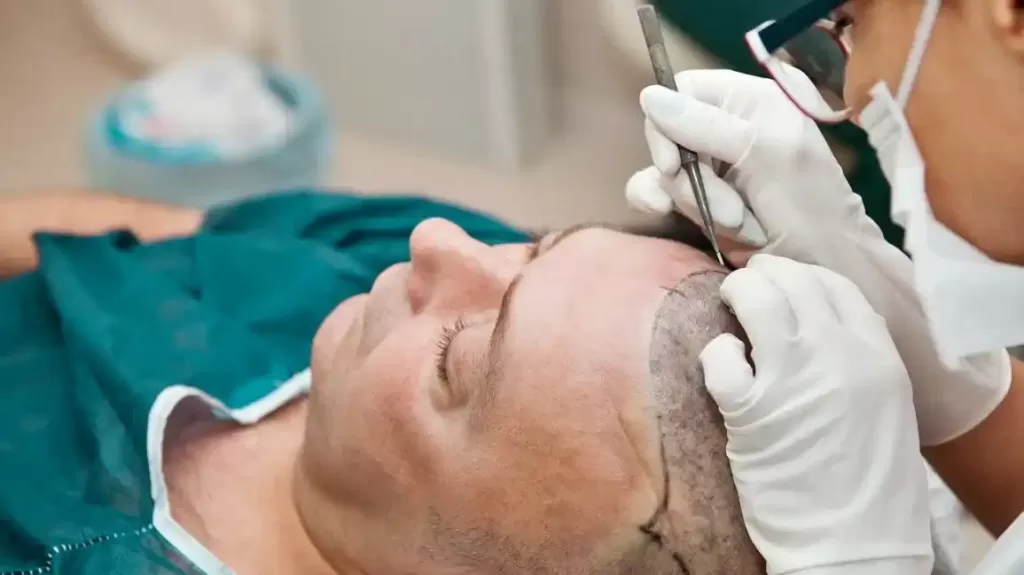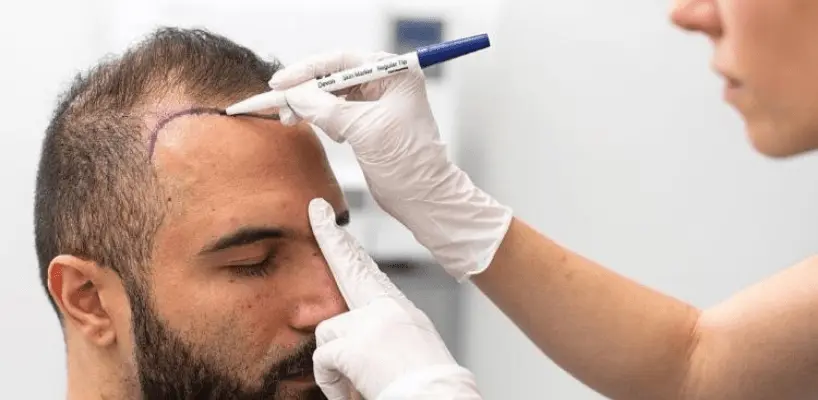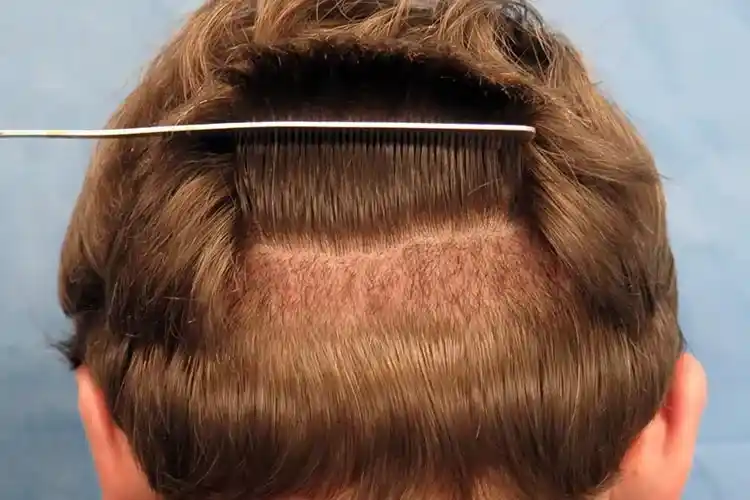Hair Transplant infection – Causes and Treatment Methods
Hair transplant infection is not a problem to be underestimated.
If you experience any side effects, be sure to contact your doctor.
Many side effects and unwanted complications may develop after hair transplantation.
These are minimal in well-programmed and well-transplanted patients.
After hair transplantation, many patients experience pain, edema, hair loss in the hair transplant area, continued crusting in the donor and hair transplant area for a long time, and decreased sensation in the donor and hair transplant area.
Complications in hair transplantation may be caused by the risks of the surgical procedure, the inadequacy of the knowledge and technology of the doctor performing the procedure, and the physiology of the patient.
For this reason, in order to minimize the complications that may arise from the patient, the patient should be informed about what to do before hair transplantation, scalp care, and what to do after transplantation.

What Will We Learn?
What Are The Symptoms Of Hair Transplant Infection?
Hair Transplant infection symptoms are as follows:
1. Hemorrhage
After hair transplantation, there may be minimal bleeding from the donor and hair transplantation area.
Aspirin, NSAI, vitamin E, alcohol, anabolic steroids and other blood thinners used by the patient before transplantation may increase the risk of bleeding.
Bleeding in the donor area is more common in the FUT method.
2. Edema
Edema may develop in the hair transplantation and donor area and on the forehead, which may last for 3-4 days.
Forehead edema causes edema around the eye with gravity, and this edema can cause the eye to close for 1-2 days.
There is no pain in this side effect, it is not a serious side effect, but it can be observed in 10% of the patients.
It goes away on its own in 3-4 days.
Forehead edema is also caused by the volume of anesthetic drugs applied to the transplantation area, and their effect on the circulation in the forehead due to excessive hair transplantation in the transplantation area.
Keeping the head up 45 degrees while lying down, low salt diet and cold compress applications will be effective in edema.
It is also an effective method to massage the forehead upwards from the eyebrows and from the middle to the edges of the forehead.
In persistent and prolonged edema, systemic corticosteroids can be given.
3. Sensory Changes In Donor And Transplantation Areas
One of the most common hair transplant infections is sensory changes.
It is frequently observed in FUT hair transplantation.
During the cutting of the nerves during the incision in the donor area and during their recovery phases, there is an increase in sensation and regional hypersensitivity on the scalp in the donro area.
In some cases, loss of sensation in the donor land may be experienced.
These improve over time.
4. Redness
Temporary redness occurs in the donor and hair transplant area.
5. Infection
This is one of the important points of our Hair Transplant Infection article.
Since hair transplantation is performed under sterile conditions, the risk of developing infection is very low.
Local infections are mostly seen in donor lana and hair transplantation areas.
Crusting after hair transplantation is a risk for the development of infection.
After sowing, this crusting should be removed from the area with special shampooing.
Antibiotic creams should be used 3-4 times a day.
Systemic antibiotics should be started when the development of infection is noticed.
Infections that start from the hair follicles often develop in the transplantation area.
6. Hair Loss in the Donor Area After Transplantation
In the FUT hair transplantation method, thinning and shedding of the hair occurs above and below the incision line on the scalp.
This resolves spontaneously within 3-4 months.
The use of minoxidil is effective in these.
We also recommend that you read our article Frequently Asked Questions and Answers About Pregnancy.
7. Hair Loss In The Transplant Area After Transplantation
Hair loss is on our Hair Transplant Infection list.
After this planting, it starts in 2-6 weeks in normal hair in the planting area. It is more common, especially in women. This situation returns to normal in 2-4 months.
4-8 weeks after planting, the hair transplanted in the 3rd month will be discarded.
This is very natural and expected.
After 4 months, these discarded hairs begin to be replaced by new ones, but it takes 1-2 years for the hair to fully manifest itself.
8. Hiccup
In 5% of patients, there may be hiccups that last a few hours or days after hair transplantation.
It passes with sleep or eating light meals without treatment.
9. Itching
Mild itching attacks may develop.
These decrease with daily washing of the hair.
10. Epidermal Cyst Formation
Cysts can develop in places where hair transplantation is performed.
These go away with simple treatments in a few weeks.
Very rarely, it can reach 2-3 mm diameters without disappearing.
11. Scar-Trace Development in the Donor Area
Especially in the FUT method, unwanted scars may develop in the donor area.
12. Unnatural Appearance
The unnatural appearance of the front hairline is especially important.
13. Continuation of Shedding After Hair Transplantation
Patients who have undergone hair transplantation at an early age should be told that hair loss will continue and the transplanted hair will stay longer, but this can sometimes cause aesthetic problems.

Infection Treatment After Hair Transplantation
Local infections can be seen in the donor area and hair transplant area.
Crusting after hair transplantation carries a risk for the development of infection.
After hair transplantation, it is necessary to remove this crust with special shampooing.
Antibiotic creams should be used 3-4 times a day.
When inflammation is observed after hair transplantation, antibiotic treatment should be started.
You can also read our article on why acne occurs on the forehead and how it passes.
Inflamed Acne After Hair Transplant
Pimples of different sizes may occur both in the donor area and in the area where the hair follicles are transplanted.
Although pimples that occur on the scalp after hair transplantation are considered normal, the transplant doctor should be informed about acne that reaches the size of chickpeas.
In order not to cause any infection and root loss, the resulting pimples should not be itchy or squeezed.
Inflammation After Hair Transplantation
Antibiotic treatment is started after the operation.
For a more effective measure, it is necessary to use a solution containing a harmless moisturizer with a germ-killing effect and a shampoo with a germ-killing effect for washing after the procedure.
Hair Root Inflammation After Hair Transplantation
Although it is not very common, there may be inflammation of the hair follicle. It is easily treated with the use of topical antibiotic creams.
It may attract your attention in our article where we answer all questions about filler material.

Things To Consider After Hair Transplantation
- It is very important to protect the transplanted area for the first 15 days, while the transplanted area should not touch the pillow while in the sleeping position. You should lie on your back.
- The hair transplant area should be protected from accidents such as impact and friction for the first 15 days.
- The first hair wash should be done under the supervision of the team and by the team.
- The process will be done by you on other days as described.
- Activities that may damage the hair transplant area and sports should be avoided for the first 2 months.
- Activities such as sauna and fitness should not be done for 1 month.
- Alcohol should not be used for the first 10 days after hair transplantation.
- Cigarette consumption should be minimized and is not recommended.
- The hair transplant area should be protected from sunlight and rain.
We have come to the end of our Hair Transplant Infection article.
If you like our article, you can consider leaving a comment.
